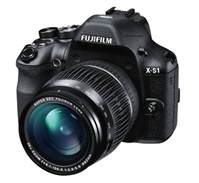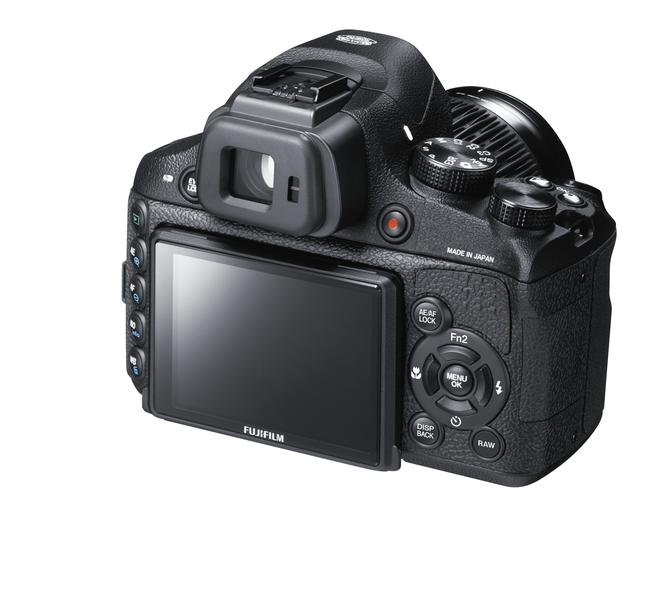Can this large-sensor superzoom take the category to a more professional level?
Fujifilm X-S1 Review
Design
Fujifilm X-S1 review – Design
From afar the X-S1 looks a lot like a DSLR and, for the most part, it feels like one in use too (not least because it’s roughly the same size and weight as one). Indeed this is far larger than a standard superzoom. The camera’s design has taken a number of staple DSLR-like features to make for easy, hands-on control. The all-metal dials are robust and the mode dial and top rotational dial protrude from the camera’s body to make them prominent targets for the hands.
 The main body itself is coated in a tactile, rubber-like coating as a means to resist moisture and enhance grip. While this may be practical, this aspect of the finish doesn’t look or feel as high quality as the more intricate metal-built parts.
The main body itself is coated in a tactile, rubber-like coating as a means to resist moisture and enhance grip. While this may be practical, this aspect of the finish doesn’t look or feel as high quality as the more intricate metal-built parts.
Using the lens is easy thanks to ridges on the barrel for a sturdy grip, mimicked by the smaller, tucked-to-the-back manual focus ring. The metallic barrel is rigid and strong, which is a sure sign of quality. Compared to the HS20 the X-S1 has the far larger manual focus ring, which makes for far more practical use as it’s easy to tuck fingers around the side of the body to get ample control.
Using the camera is easy for the most part, and the inclusion of two Fn buttons – one set next to the mode dial on the top of the camera, the other the upward key of the rear d-pad – ensure quick-access options are available. Customisation of these keys is also possible.
 At times, however, the arrangement of buttons and dials can feel a little close together. To change the autofocus point position while still looking through the EVF, for example, requires pressing one out of the four rear, left-aligned buttons before then using the d-pad to reposition the point and the top thumbwheel to re-size if desired. Sounds seamless, but the right hands feels as though it’s pressing against the corner of the camera body to reach all necessary settings. A more ergonomic layout wouldn’t have gone amiss, something a front press-button-cum-thumbwheel could have gone some way to assisting with.
At times, however, the arrangement of buttons and dials can feel a little close together. To change the autofocus point position while still looking through the EVF, for example, requires pressing one out of the four rear, left-aligned buttons before then using the d-pad to reposition the point and the top thumbwheel to re-size if desired. Sounds seamless, but the right hands feels as though it’s pressing against the corner of the camera body to reach all necessary settings. A more ergonomic layout wouldn’t have gone amiss, something a front press-button-cum-thumbwheel could have gone some way to assisting with.




